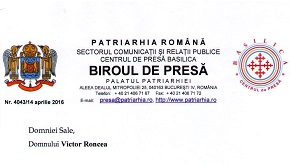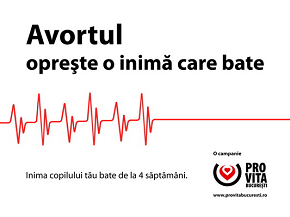Cipurile RFID, introduse in actele de identitate ale romanilor fara nici o dezbatere publica, comporta riscuri care ar trebui sa intre in atentia Ministerului Sanatatii si a cadrelor medicale din Romania. Iata: REPORT OF THE COUNCIL ON ETHICAL AND JUDICIAL AFFAIRS*
REPORT OF THE COUNCIL ON ETHICAL AND JUDICIAL AFFAIRS*
CEJA Report 5-A-07
Subject: Radio Frequency ID Devices in Humans
Presented by: Robert M. Sade, MD, Chair
Referred to: Reference Committee on Amendments to Constitution and Bylaws
(Richert E. Quinn, Jr., MD, Chair)
INTRODUCTION
Radio frequency identification (RFID) tags are computer chips connected to miniature antennae that can be used to transmit information electronically via a proximate RFID reader. The use of these devices in health care represents another promising development in information technology, but also raises important ethical, legal and social issues. Specifically, the use of RFID labeling in humans for medical purposes may improve patient safety, but also may pose some physical risks, compromise patient privacy, or present other social hazards.
This report responds to Resolution 6 (A-06), “RFID Labeling in Humans,” which called for study of the medical and ethical implications of RFID chips in humans. This report focuses on ethical issues in the use of RFID chips, specifically in regard to their implantation for clinical purposes.
BACKGROUND
Radio frequency identification devices utilize wireless technology to communicate data via signals in the radio frequency range of the electromagnetic spectrum. Data are stored in a microchip attached to an antenna, and packaged so that they can be attached to or embedded in products, animals, or people.
The two main types of RFID tags are passive and active. Passive tags contain no internal power supply. They convert the radio frequency energy emitted from a reader device into signals that transmit stored data for a distance of a few feet. These passive devices currently have restricted amounts of data storage and are of limited functionality, because the information they contain cannot be modified.
In comparison, active RFID tags contain an internal battery, which provides increased reliability, longer transmission ranges, on-tag data processing and greater data storage.[1] While their capacity to process data internally allows for expanded capabilities in the future, their greater transmission range presents a more substantial threat to data confidentiality and patients’ privacy.
In October 2004, the US Food and Drug Administration (FDA) approved the first RFID tags specifically intended for human implantation.[2] Approved RFID devices are currently limited to passive units, intended for identifying patients. Active RFID chips may be approved in the future.
Human-implanted passive RFID devices that identify patients may also contain essential biometric and medical information. The tags are primarily intended for patients with chronic diseases, such as coronary artery disease, chronic obstructive pulmonary disease, diabetes mellitus, stroke or seizure disorder, or are implanted into patients with medical devices such as pacemakers, stents, or joint replacements. These devices are approximately the size of a grain of rice, and are implanted under the skin via a hypodermic-type needle in less than one minute.[3]
INFORMATION SYSTEMS
RFID tags may promote the timely identification of patients and expedite access to their medical information. As a result, these devices can improve the continuity and coordination of care with resulting reduction in adverse drug events and other medical errors.[4]
RFID tags also may improve efficiency within the health care system. In conjunction with improved medical record management, these devices may facilitate access to patient records, medication lists, and diagnostic tests.[5] To be maximally effective, however, the information in these devices must be adequately integrated into present clinical information and communications systems, laboratory databases, and pharmacy systems.1
Appropriate processes also must be developed to inscribe, read and archive data stored on RFID tags. As new designs enter the marketplace, the emergence of competing standards may present problems for hospital staff if a patient’s ID tag proves incompatible with the interrogation devices employed by the hospital.1
Physical risks to patients
These devices may present physical risks to the patient. Though they are removable, their small size allows them to migrate under the skin, making them potentially difficult to extract. However, this tendency may be minimized by constructing RFID tags from materials that permit surrounding tissue to encase the device. In addition, RFID tags may cause electromagnetic interference, which may interfere with electrosurgical devices and defibrillators.1 Finally, it has not been determined whether RFID tags might affect the efficacy of pharmaceuticals.1,[6]
PATIENT PRIVACY AND SECURITY
The primary concerns surrounding human RFID labeling pertain to their potential impact on patient privacy and security. Physicians must assure patients that their medical information will be held in confidence (see Opinion E-5.05, “Confidentiality”). Moreover, maintenance of privacy is required to protect patients from embarrassment, potential social discrimination, loss of health care coverage, or other detrimental consequences (see Opinion E-5.059, “Privacy in the Context of Health Care”).
At this time, the security of RFID devices has not been fully established. Physicians, therefore, cannot assure patients that the personal information contained on RFID tags will be appropriately protected. In light of these security concerns, the FDA currently requires RFID transponders to store only a unique electronic identification code to be read by the scanner.2 This identification code can then be used to access patient identity and corresponding health information stored in a database.
To protect confidentiality and privacy, the medical community should advocate for the adoption of other protections, such as computer encryption or digital signatures. Ultimately, the medical community should undertake appropriate efforts to prevent unauthorized access to patients’ information contained on RFID tags (see also E-5.07, “Confidentiality: Computers,” AMA Policy Database).
INFORMED CONSENT
To properly respect patient autonomy, RFID tags should not be implanted or removed without the prior consent of patients or their surrogates (see E-8.08, “Informed Consent,” and E-8.081, “Surrogate Decision Making”). During the consent process, decision-makers should be informed of the potential risks and benefits associated with RFID tags, including the many uncertainties regarding their efficacy. Patients are also entitled to know who will be granted access to the data contained on RFID tags and the purposes for which this information will be used.[7]
FURTHER CONSIDERATIONS
It seems likely that utilization of RFID devices for medical purposes will expand.4 The medical profession must continue to monitor the efficacy of these devices. If RFID tags are proven to benefit patient care significantly, the profession should advocate for widespread adoption of RFID technology, and for policies that make RFID tags available to all patients who would benefit (see Opinion E-2.095, “The Provision of Adequate Health Care”).
However, if objective evidence demonstrates negative consequences that outweigh the benefits in relation to health care, the medical profession will bear an important responsibility to oppose the use of RFID labeling in humans.
Finally, physicians should be aware of emerging non-medical applications of human-implantable RFID devices. For instance, active RFID technologies might be considered for the tracking or surveillance of individuals who pose a threat to others. Although this is only one of many possible uses of RFID technology in the future, it alerts the medical profession to the need for continuous assessment of the appropriate role of physicians participating in RFID labeling of human beings. Indeed, certain uses could constitute an infringement upon patients’ individual liberties, placing physicians in a position to act as patient advocates by promoting the use of other, less intrusive alternatives, when available.4
CONCLUSION
RFID technology has the potential to improve patient care as well as patient safety. However, the safety and efficacy of human-implantable RFID devices has yet to be established. Therefore, the medical community should support further investigations to obtain the data necessary to make informed medical decisions regarding the use of these devices. The medical community should also be sensitive to potential social consequences of RFID devices, such as non-medical applications in law enforcement.
RECOMMENDATION
The Council on Ethical and Judicial Affairs recommends that the following be adopted and the remainder of the report be filed.
Radio frequency identification (RFID) devices may help to identify patients, thereby improving the safety and efficiency of patient care, and may be used to enable secure access to patient clinical information. However, their efficacy and security have not been established. Therefore, physicians implanting such devices should take certain precautions:
(1) The informed consent process must include disclosure of medical uncertainties associated with these devices.
(2) Physicians should strive to protect patients’ privacy by storing confidential information only on RFID devices with informational security similar to that required of medical records.
(3) Physicians should support research into the safety, efficacy, and potential non-medical uses of RFID devices in human beings.
(NEW HOD/CEJA Policy)
Fiscal Note: Staff cost estimated at less than $500 to implement.
* Reports of the Council on Ethical and Judicial Affairs are assigned to the reference committee on Constitution and Bylaws. They may be adopted, not adopted, or referred. A report may not be amended, except to clarify the meaning of the report and only with the concurrence of the Council.
[1] Ingeholm; Mun, K; Mun, SK. RFID in Healthcare: The Applications, and Obstacles, Are Many; Journal of AHIMA; 2006. 77(8): 56-62.
[2] US Food and Drug Administration. Medical devices; general hospital and personal use devices; classification of implantable radiofrequency trasnsponder system for patient information and health information. Federal Register. 2004; 69(237): 71702-4.
[3] DeNoon D. Chip implants: Better care or pricacy scare. 2005. Accessible at” https://www.webmd.com/content/Article/109/109216.htm
[4] Wicks, AM; Visich, JK; Li, Suhong. Radio Frequency Identification Applications in Hospital Environments; Hospital Topics.2006; 84(3): 3-8.
[5] VeriMed™ Information Center for Patients; https://www.verimedinfo.com/content/intro/physicians
[6] Wasserman, Elizabeth. A Prescription for Pharmaceuticals; RFID Journal. 2006. Accessible at: https://www.rfidjournal.com/magazine/article/1739/1/173/
[7] Opinion of the European Group on Ethics in Science and New Technologies to the European Commission, Ethical Aspects of ICT Implants in the Human Body. 2005.
Descarca aici:
https://www.ama-assn.org/ama1/pub/upload/mm/467/ceja5a07.doc

 January 27th, 2009
January 27th, 2009  VR
VR 
 Posted in Uncategorized
Posted in Uncategorized  Tags:
Tags: 





































First of All, dear Earth citizens ,, THIS IS A LONG STORY , many human being faced PAINS,health breakdowns, COMPLICATIONS, , even death after chip implants, SEE ADRIAN ,S story, HE DIED AFTER A SEVERE INFECTION CA– USED BY HIS ALIEN CHIP IMPLANT .THIS IS NOT A HUMAN INVENTION, IT,S AN ALIEN INVENTION, NOT hi tech , BUT A SAD EXPERIENCE PREPARED FOR YOU ALL. The human body speaking in terms of medical science was not created to tolerate alien implants WHATEVER THE REASONS MAY BE IN THE BENEFIT OR AGAINST OUR NATURE. OUR BODY IS A SANCTUARY AND OUR DIVINE CONSCIENCE REF– USES TO ACCEPT SUCH AN ILLEGAL INTRUSION . DO NOT ACCEPT.. DO NOT SAY YES..THIS PLANET IS A WONDERFUL ONE… WE HAVE EVERYTHING HERE.. DON’T LOOSE YOUR FREEDOM , YOUR LIFE, IN THE NAME OF AN ALIEN STUPID INVENTION.